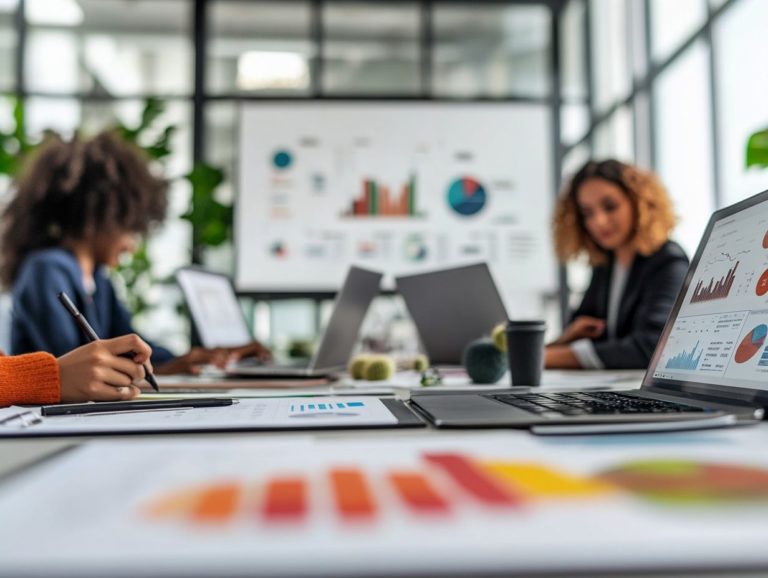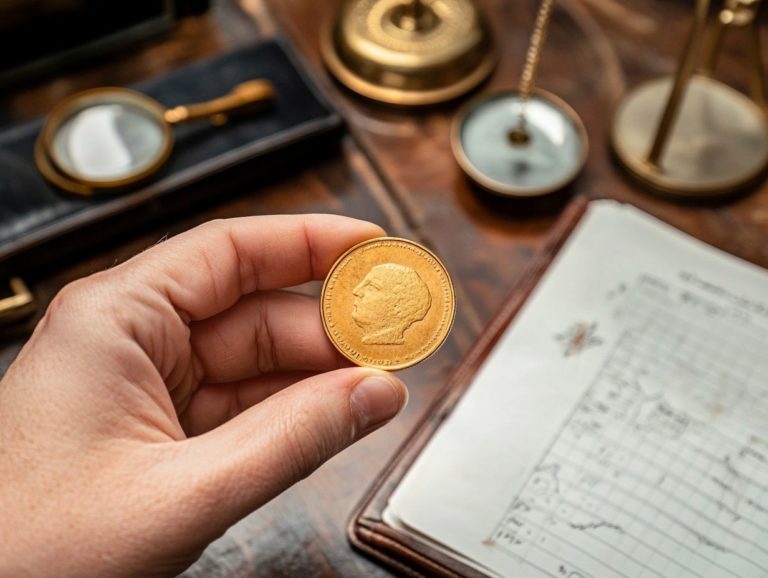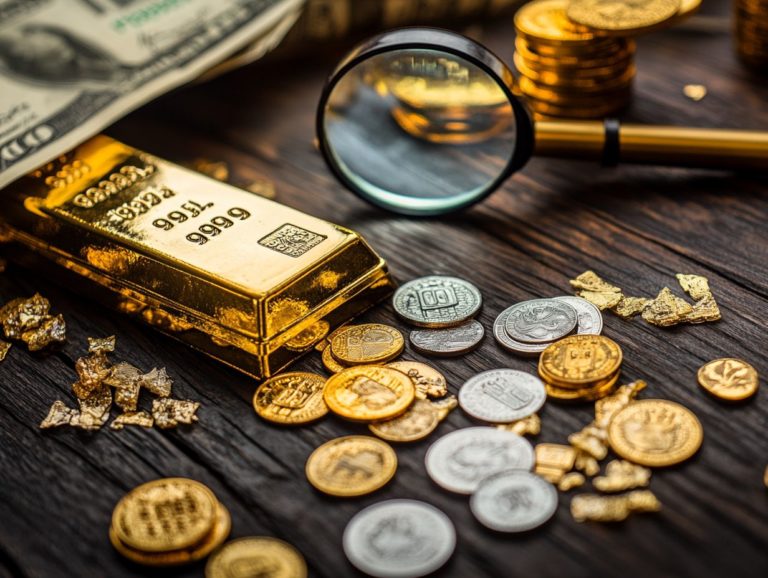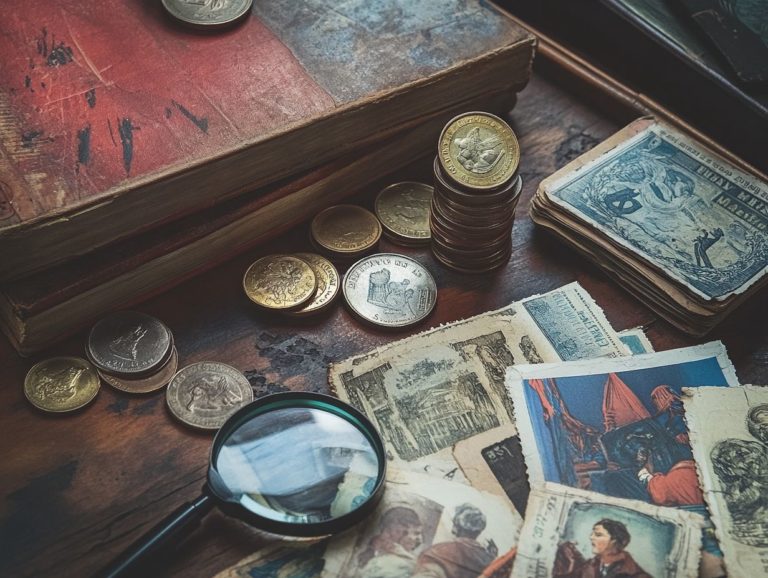How to Get Started with Precious Metals Investing?
Investing in precious metals like gold, silver, platinum, and palladium has long stood as a reliable strategy for preserving wealth and achieving diversification.
In an era marked by rising inflation and market uncertainties, many are seeking refuge in these tangible assets for the stability they offer.
Discover the exciting benefits of investing in precious metals that can transform your financial future!
This article delves into the myriad benefits of precious metals, the different types available for investment, and the various methods you can employ.
You’ll also discover essential factors to consider and valuable tips for successful investing.
Whether you re a seasoned investor or simply curious about the world of precious metals, you ll find insights designed to illuminate your path forward.
Contents
Key Takeaways:
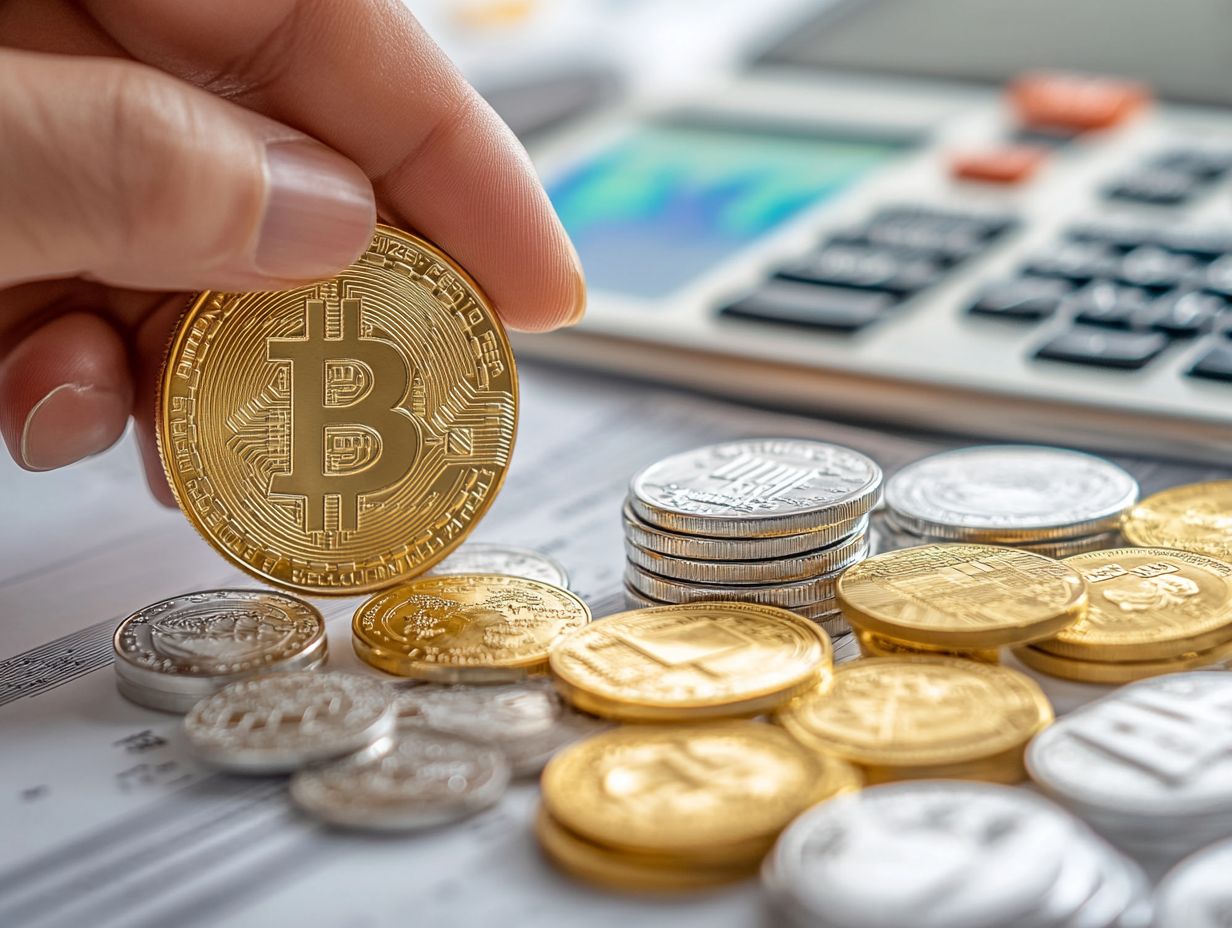
- Understand the benefits of investing in precious metals, such as protection against inflation and market volatility.
- Consider the different types of precious metals available for investment, including gold, silver, platinum, and palladium.
- Explore different ways to invest in precious metals, such as physical bullion, ETFs (Exchange-Traded Funds), mining stocks, and futures.
Why Precious Metals Matter for Your Investment Strategy
Precious metals gold, silver, platinum, and palladium are highly sought-after commodities, cherished for their value and unique properties that make them ideal for both industrial use and investment.
For centuries, these metals have served as currency and a means of wealth protection. They also act as a savvy way to diversify your investment portfolio against inflation and market volatility.
Their rarity and aesthetic allure are just the beginning; their historical significance as benchmarks for trade and ownership further solidifies their credibility in the financial sphere.
With increasing demand for green technologies, particularly for platinum and palladium, their industrial uses have surged, significantly influencing market trends.
As an investor, you have various options at your fingertips whether it’s bullion bars, coins, or even ETFs making it easier than ever to weave these valuable assets into your financial strategy.
The price movements of these metals often mirror economic indicators, reinforcing their role as protection against risks in an ever-changing landscape.
Benefits of Investing in Precious Metals
Investing in precious metals presents a wealth of advantages, positioning them as a compelling addition to any investment portfolio designed for wealth protection and financial management.
They also provide reliable protection against inflation, offering a buffer against the unpredictability of market conditions and currency fluctuations.
This not only helps safeguard your assets but also enriches your overall portfolio diversification.
Protection Against Inflation and Market Volatility
Precious metals like gold and silver serve as safe havens during inflation and market volatility, making them essential for mitigating investment risks.
Their historical stability and inherent value provide a reliable safeguard against unpredictable financial markets.
Throughout history, investors have gravitated toward these metals during economic downturns. Most notably, during the 2008 financial crisis, gold prices soared as stock markets faltered.
This trend is driven by fears of currency devaluation and declining consumer confidence, which heightens the appeal of hard assets.
By incorporating these precious metals into your diversified portfolio, you not only preserve your wealth but also create a buffer against devaluations caused by inflationary pressures.
As central banks ramp up their gold reserves in uncertain economic times, it underscores the lasting role these metals play in global finance, affirming their value as a strategic investment for effectively managing risks.
Types of Precious Metals to Invest In
When evaluating investments in precious metals, you ll likely find yourself focusing on four primary types: gold, silver, platinum, and palladium.
Each of these metals has distinct characteristics and market demands that align with various investment strategies and industrial applications.
This diversity makes them valuable assets to include in a well-rounded portfolio.
Don’t wait start exploring your options in precious metals today!
Gold, Silver, Platinum, and Palladium
Gold, silver, platinum, and palladium are precious metals that you should consider. Each metal has unique qualities and varying market demands, making them important for preserving your wealth.
These metals not only serve as a buffer against inflation and currency fluctuations, but they also hold significant value across various industrial sectors.
- Gold isn t just for exquisite jewelry; its remarkable conductivity makes it a favorite in electronics.
- Silver is often a more budget-friendly choice, yet it s vital in producing solar panels and medical devices.
- Platinum and palladium are increasingly important in the automotive industry, especially due to their catalytic properties that help reduce emissions.
Leading mining companies like Barrick Gold for gold and First Majestic Silver for silver highlight the ongoing demand and strategic investment opportunities available in these markets.
Ways to Invest in Precious Metals
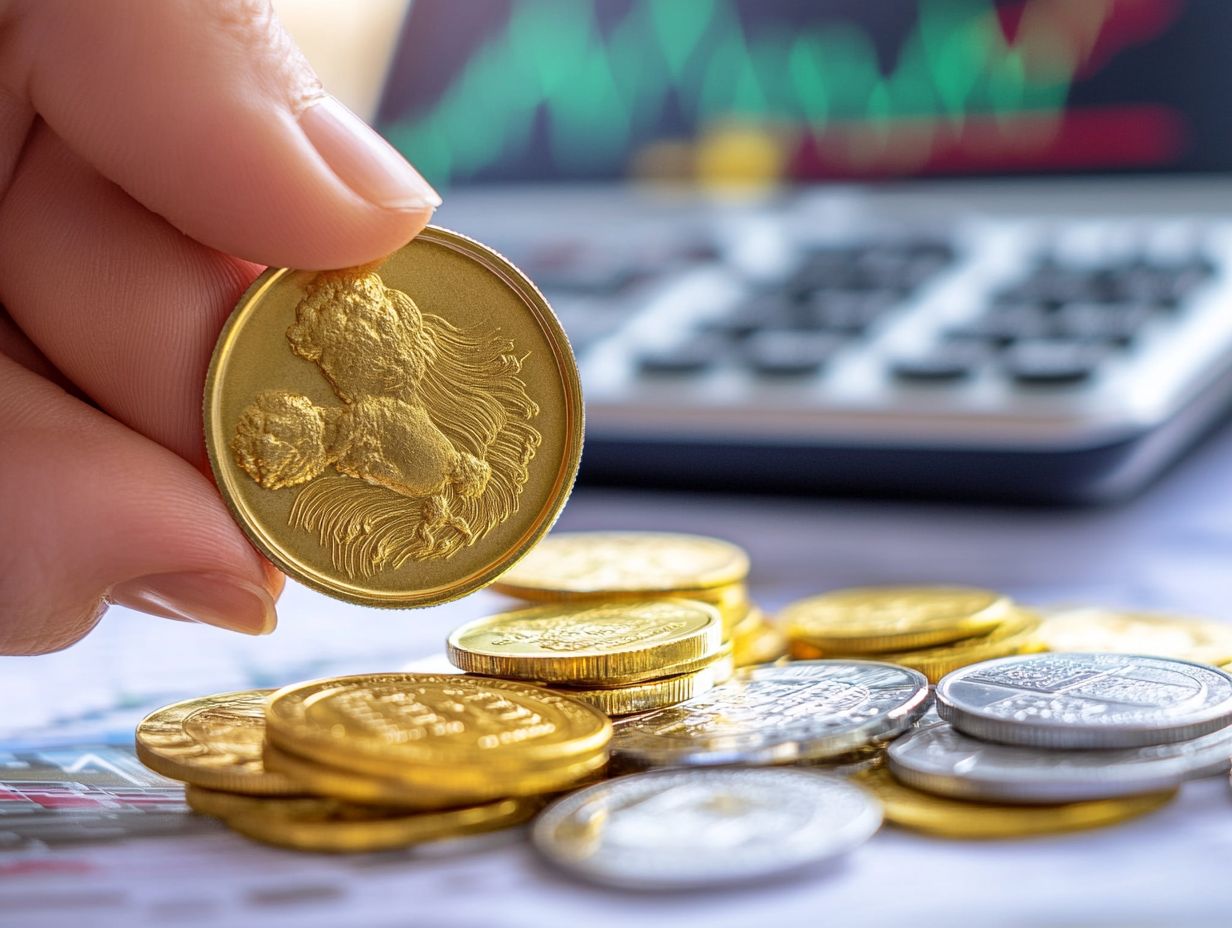
As an investor, you have various options for acquiring precious metals, including physical bullion, exchange-traded funds (ETFs), mining stocks, and futures. It’s also important to learn how to protect your precious metal investments to safeguard your assets.
Each option presents distinct advantages and investment strategies tailored to your goals. Choosing the right approach can significantly impact how effectively precious metals enhance your investment portfolio and protect you against financial uncertainties.
Physical Bullion, ETFs, Mining Stocks, and Futures
When investing in precious metals, you have standout options such as physical bullion, ETFs, and mining stocks. For a comprehensive understanding, check out this guide on investing in precious metals. Each of these choices comes with its own set of advantages and risks.
With physical bullion, you get the satisfaction of tangible ownership. On the other hand, ETFs and mutual funds offer a more accessible and liquid route, backed by the performance of the underlying metals or mining companies.
These options can be particularly appealing if you want to diversify your portfolio. Bullion serves as a protective hedge against inflation and economic downturns, while ETFs provide ease of trading, allowing quick adjustments to market conditions.
However, keep in mind that ETFs may incur management fees and potential tracking errors. Investing in mining stocks exposes you to fluctuations in the stock market and operational risks specific to mining ventures.
Futures contracts add another layer of complexity, as they allow speculation on price movements. However, they come with the risk of substantial losses if your predictions do not pan out.
Creating a well-rounded investment strategy may involve a blend of these approaches, striking a balance between risk and reward that aligns with your financial goals.
Factors to Consider Before Investing
Before you invest in precious metals, it’s essential to evaluate several factors, including market trends, storage options, and what to know about trading in precious metals, along with associated fees.
These elements can greatly influence your overall return on investment. By understanding these considerations, you can effectively navigate potential risks and seize opportunities in the precious metals market.
Market Trends, Storage Options, and Fees
Understanding market trends, selecting the right storage options, and being aware of fees are crucial for anyone investing in precious metals. These factors directly influence your profitability and investment security.
Staying informed about market conditions enables you to make educated decisions and avoid potential financial pitfalls. Market fluctuations can significantly affect the value of gold, silver, and other precious metals, presenting opportunities for gains or exposing risks for losses depending on your timing.
By analyzing supply and demand dynamics, geopolitical events, and economic indicators, you can gain valuable insights to navigate this complex market.
When it comes to storage, a variety of options are available, from home safes to secure vaults. Each option has its advantages and disadvantages, balancing accessibility against security.
Being aware of the fees associated with storage and transaction costs is crucial. This awareness ensures you re not caught off guard and helps mitigate the underlying investment risks that could threaten your financial outcomes.
Investing in precious metals can safeguard your wealth! Take action now by researching investing in precious metals for retirement and consulting with a financial advisor to explore the best strategies for you.
Tips for Successful Precious Metals Investing
For successful precious metals investing, embracing a long-term approach and diversifying your portfolio are essential strategies. They can significantly enhance your returns while reducing risks from market ups and downs.
Thoughtfully allocating your resources across various types of precious metals and investment methods helps you navigate financial uncertainties and positions you for lasting success.
Diversification and Long-Term Focus
Diversifying your investment portfolio and embracing a long-term strategy are crucial for successful precious metals investing, especially amid fluctuating market conditions.
By spreading your investments across different metals and strategies, you enhance wealth protection while minimizing risk exposure. This strategy helps protect your investments during market swings and maximizes potential returns over time.
For example, incorporating a blend of gold, silver, platinum, and palladium can create a well-rounded strategy. Imagine allocating:
- 50% to gold for stability,
- 30% to silver for growth potential,
- 20% to platinum and palladium for their industrial demand this ensures your portfolio remains resilient.
Holding physical assets alongside ETFs or mining stocks further diversifies your risk. By paying attention to economic indicators and market trends, you can make informed choices that align perfectly with your long-term investment goals.
Frequently Asked Questions
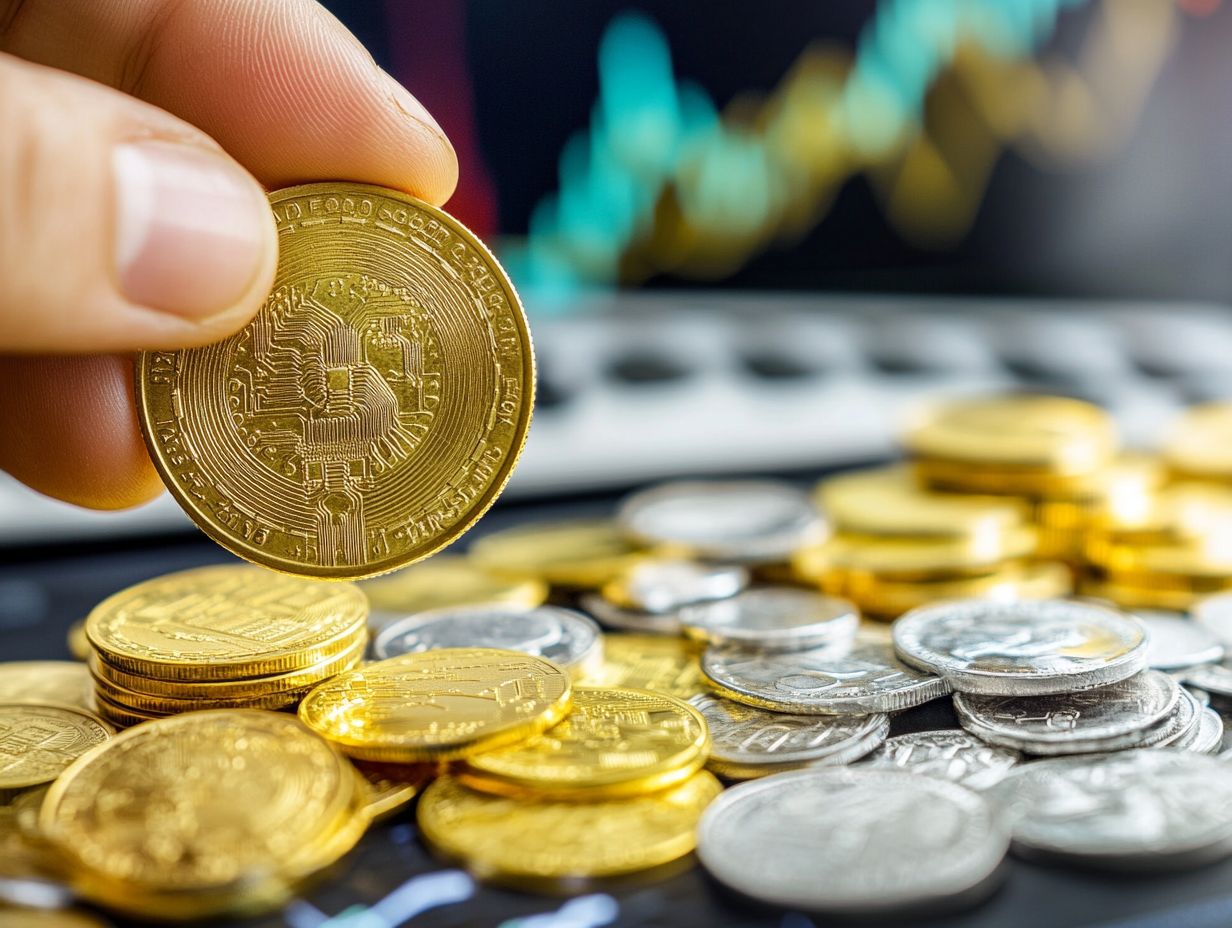
What are precious metals?
Precious metals are rare, naturally occurring metals that have high economic value. Examples include gold, silver, platinum, and palladium.
Why should I consider investing in precious metals?
Precious metals are tangible assets that can protect against inflation and economic instability. They also have a history of retaining their value and can provide portfolio diversification.
How do I get started with precious metals investing?
The first step is to research and educate yourself about the different types of precious metals, their market trends, and how to start investing in precious metals, including options like physical bullion, ETFs, and mining stocks.
What is the best way to purchase precious metals?
This depends on your personal investment goals and preferences. Some may prefer to buy physical bullion for long-term holdings, while others may opt for a more liquid option like ETFs. It’s recommended to consult with a financial advisor before making any investment decisions.
Is it possible to lose money with precious metals investing?
As with any investment, there is always a risk of losing money. Precious metals can fluctuate in value and are not immune to market volatility. It’s important to thoroughly research and understand the market before investing and to diversify your portfolio to mitigate potential losses.
Are there any tax implications for investing in precious metals?
Investing in precious metals may have tax implications, depending on your country’s regulations. It’s advisable to consult a tax professional to understand the specific tax consequences of your investments.
Start your investing journey today!
Investing in Precious Metals: What You Need to Know
Yes, there are tax implications for investing in precious metals. Depending on where you live, there may be taxes on the purchase, sale, or storage of these assets.
It’s crucial to consult with a tax advisor to understand the specific laws in your area.
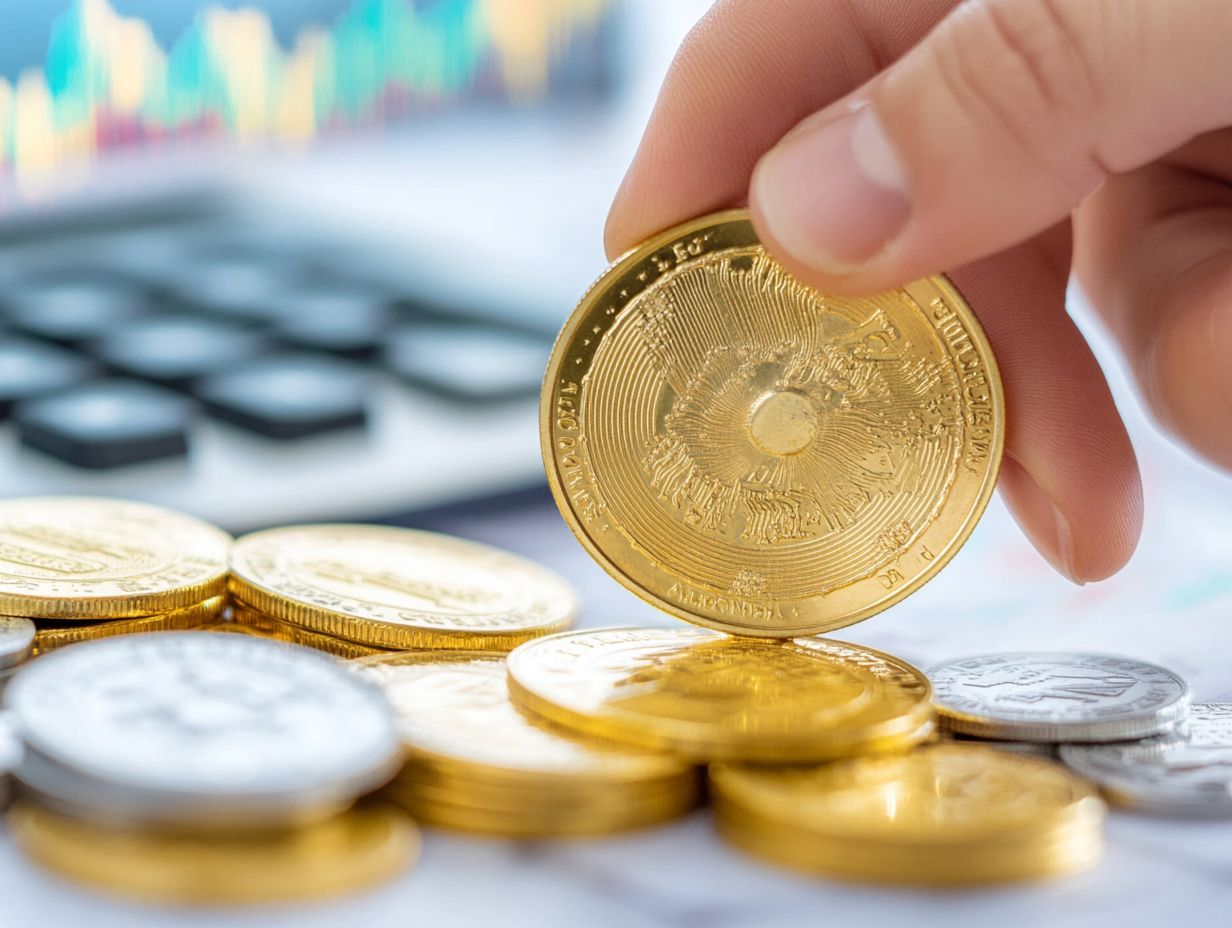
What is the best way to buy precious metals? This depends on your personal investment goals and preferences, and knowing how to research precious metals markets can greatly assist in making informed decisions.
Some investors prefer physical bullion for long-term holdings, while others choose more liquid options like exchange-traded funds (ETFs).
Always consult with a financial advisor before making any investment decisions.
Can you lose money investing in precious metals? Yes, like any investment, there is a risk of loss.
The value of precious metals can fluctuate and they are subject to market volatility. Research thoroughly and understand the market before investing.
Diversifying your portfolio can help mitigate potential losses.

